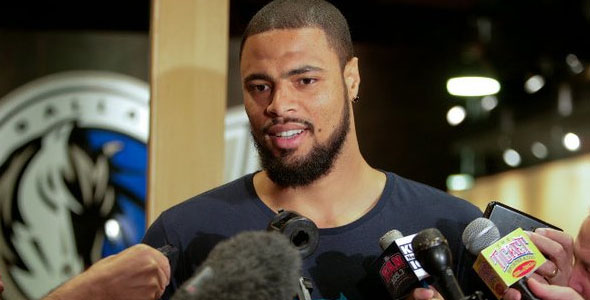 The Los Angeles Lakers have started the season at a stumbling pace. It should be mentioned that the Princeton offense didn’t look so bad at first. unfortunately, “at first” was limited to just over half of a quarter.
The Los Angeles Lakers have started the season at a stumbling pace. It should be mentioned that the Princeton offense didn’t look so bad at first. unfortunately, “at first” was limited to just over half of a quarter.
On their home opener against the Mavericks, the Lakers started the game off by putting Dallas in a bit of a defensive flurry. Dwight was moving surprisingly well, though perhaps the only surprising thing about him was the consistency of his movement. Kobe Bryant was making the cuts indicative of the Princeton offense early in this game as well. To top it off, Pau Gasol was able to show off some of his excellent passing skills by finding these cutters.
Initially, it all looked fine. And then…
The Lakers started to look disjointed. To be sure, Los Angeles kept up with Dallas in terms of statistics. Both teams were nearly head-to-head in field goal percentage, turnovers, steals, and personal fouls, just to name a few. There was one statistic indicative of LA’s problem: free throw percentage.
Putting Dwight Howard in a Lakers jersey doesn’t increase his free throw percentage. As such, his dominant presence in the paint was subverted by his now regular inefficiency at the line. Just outside of being gored, Howard was fouled every way possible. The Mavericks put Howard on the line for 14 shots, of which he would make just 3. The game was decided by 8 points. In the crudest sense, those free throws could very well have won that game.
But that’s not the point. The point is that although the Lakers did seem to have little grasp of the cut-heavy offense, it was hardly the problem. For that particular game, Howard’s freethrows were an issue.
The Lakers’ next game against Portland was slightly different, though the result wasn’t different. Portland bested Los Angeles by a score of 116-106. In this contest, Howard was locked in at the charity stripe. He knocked down 15 of his 19 free throw attempts. This time, the problem came at the hands (or lack thereof) of the Lakers on offense. LA coughed the ball up a surprising 24 times. 7 of those turnovers came from Kobe Bryant. 6 of them from Ron Artest Metta World Peace.
Here’s another contest where the Princeton Offense wasn’t necessarily the problem. Steve Nash ended up getting hurt early in this one. After that, it essentially became the nightly Kobe Bryant show we’re so used to. Though efficient (10-20 from the field), Bryant stalled much of the offense. It’s nothing new, but it did prevent LA from keeping an established offensive momentum. Every good pass play from the high-low combo of Gasol and Howard led to Bryant taking over the following possession.
Excusing Bryant, the Blazers did their part to win this game. Portland snagged 30 total rebounds (10 offensive), had 10 steals, and get their hands on plenty of Lakers passes to disrupt movement.
Those two games are enough to make this point: the system isn’t the problem, but neither is the team.
The Princeton system is a model of basketball efficiency. It effectively requires 5 players who can each handle, shoot, and pass the ball. It also requires constant movement. Basically, there are multiple cuts happening all at the same time. Guys like Howard and Gasol would be expected to be just as skilled on the perimeter as they were in the post.
That’s just asking too much of an NBA team.
The Princeton offense was also great partly because it was the ultimate teaching tool for a basketball coach. The system’s requirements of all 5 players were practically a playbook pulpit of what coaches try so hard to teach all of their players. By diagramming and (more importantly) quantifying the benefits of an emphasis on fundamentals, coaching was made easier.
That kind of system is lauded and celebrated, and for good reason. But, once you try to translate that to success at the NBA level- where ideals give way to results- the Princeton offense is a tough sell.
Just look at what LA is playing as an offensive system. It’s referred to by analysts and fans alike as a “hybrid offense”, where the Lakers employ some of Princeton and some triangle offense.
That’s not a hybrid, it’s a hint.
Mohamed Abdihakim is a journalism student at Florida Atlantic University. He is a Phoenix Suns fan, who is not prepared for the possibility of Nash winning a title in a Lakers jersey. Mohamed is also a contributor at “Les Snobs”. Interests include International basketball, Mad Men, and blues music. Nearly all stats are credited to Hoopdata or Basketball-Reference.
Twitter handle: @Abdi_hakim



















